-
 Bitcoin
Bitcoin $117700
-0.03% -
 Ethereum
Ethereum $3805
0.49% -
 XRP
XRP $3.098
-1.00% -
 Tether USDt
Tether USDt $1.000
0.03% -
 BNB
BNB $792.8
-1.72% -
 Solana
Solana $177.9
-1.95% -
 USDC
USDC $1.000
0.02% -
 Dogecoin
Dogecoin $0.2202
-1.55% -
 TRON
TRON $0.3278
-2.92% -
 Cardano
Cardano $0.7641
-2.43% -
 Hyperliquid
Hyperliquid $42.21
-2.68% -
 Sui
Sui $3.758
-1.58% -
 Stellar
Stellar $0.4080
-3.21% -
 Chainlink
Chainlink $17.75
-0.33% -
 Bitcoin Cash
Bitcoin Cash $591.8
4.96% -
 Hedera
Hedera $0.2561
-3.09% -
 Avalanche
Avalanche $23.34
-4.24% -
 Litecoin
Litecoin $110.7
1.96% -
 UNUS SED LEO
UNUS SED LEO $8.956
-0.01% -
 Toncoin
Toncoin $3.410
0.79% -
 Ethena USDe
Ethena USDe $1.001
0.03% -
 Shiba Inu
Shiba Inu $0.00001288
-1.82% -
 Uniswap
Uniswap $10.07
-2.06% -
 Polkadot
Polkadot $3.807
-2.27% -
 Monero
Monero $308.2
-2.15% -
 Dai
Dai $1.000
0.03% -
 Bitget Token
Bitget Token $4.521
-0.30% -
 Pepe
Pepe $0.00001134
-1.52% -
 Cronos
Cronos $0.1457
0.65% -
 Aave
Aave $274.9
-2.47%
How are Binance’s trading pairs selected and added?
Binance, a major cryptocurrency exchange, offers numerous trading pairs, enabling users to trade diverse digital assets, with factors like market liquidity and user demand influencing their selection and addition to the platform.
Feb 21, 2025 at 12:47 pm
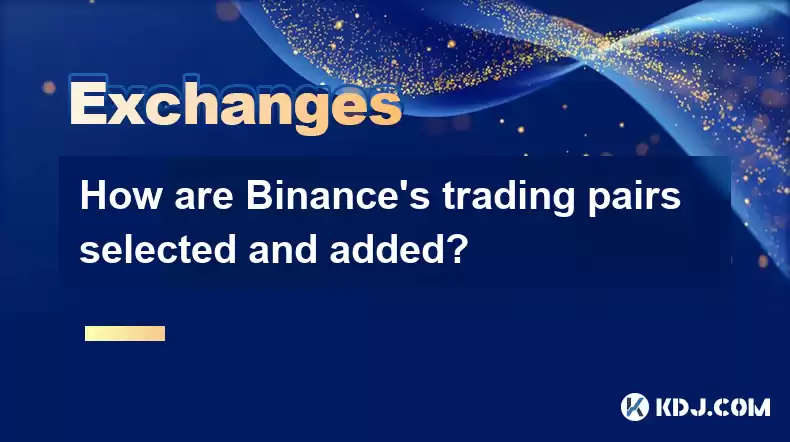
1. General Introduction to Binance's Trading Pair Ecosystem
2. The Significance of Trading Pair Selection
Market Liquidity: High - liquidity trading pairs ensure smooth transactions. For example, BTC/USDT has high liquidity, allowing large - volume trades without significant price slippage.
User Demand: Binance pays close attention to what users want. If there is a strong demand for a particular trading pair, it has a higher chance of being added.
3. Binance's Initial Screening Criteria for New Coins
Project Basics: Binance reviews the project's whitepaper. A well - written whitepaper that clearly defines the project's goals, technology, and tokenomics is a plus.
Team Background: The team behind the project is examined. A team with relevant experience in blockchain, finance, and technology is more likely to be considered.
Market Capitalization: To some extent, the market cap of the coin is evaluated. Larger market - cap coins often bring more stability.
4. The Technical Assessment Process
Security Audits: Binance requires new coins to pass security audits. This ensures that the smart contracts of the tokens are free from major vulnerabilities.
Network Compatibility: The coin's blockchain network needs to be compatible with Binance's trading infrastructure. For instance, it should be able to handle the expected transaction volume.
5. Community and Market Reputation Considerations
Social Media Presence: Binance looks at the coin's presence on social media platforms like Twitter, Telegram, and Reddit. A large and active community can be a positive sign.
Market Reputation: The coin's reputation within the cryptocurrency community is also considered. A history of negative events may lead to rejection.
6. The Application Process for New Coins to Be Listed
Submission: Projects interested in being listed on Binance need to submit an application, which includes detailed information about the project.
Documentation Review: Binance's team reviews all the submitted documentation thoroughly, checking for compliance and completeness.
7. Internal Evaluation and Decision - Making
Risk Assessment: Binance's risk assessment team evaluates the potential risks associated with adding a new trading pair, such as regulatory risks and market volatility risks.
Final Approval: After all evaluations are completed, a final decision is made by the relevant decision - making bodies within Binance. If approved, the new trading pair will enter the preparation stage for listing.
8. Pre - Listing Preparation
Trading Engine Configuration: Binance configures its trading engine to support the new trading pair. This includes setting up order books, price feeds, and trading rules.
User Communication: Binance will inform its users about the upcoming addition of the new trading pair in advance through official channels, such as announcements on its website and mobile app.
9. Listing and Post - Listing Monitoring
Listing: Once all preparations are complete, the new trading pair is listed on Binance. Trading can then commence.
Monitoring: After listing, Binance closely monitors the trading pair's performance, including trading volume, price movements, and any potential issues that may arise. If problems are detected, appropriate measures will be taken, such as temporary trading halts or delisting in extreme cases.
Disclaimer:info@kdj.com
The information provided is not trading advice. kdj.com does not assume any responsibility for any investments made based on the information provided in this article. Cryptocurrencies are highly volatile and it is highly recommended that you invest with caution after thorough research!
If you believe that the content used on this website infringes your copyright, please contact us immediately (info@kdj.com) and we will delete it promptly.
- Cold Wallet vs. MetaMask: A Crypto Wallet Revolution?
- 2025-07-31 10:30:57
- Bitcoin Casinos in 2025: Instant Payouts and Welcome Bonuses
- 2025-07-31 10:50:33
- Meme Coins in 2025: Token Burns and the Quest for Moonshots
- 2025-07-31 10:50:33
- Unlocking Value: A Deep Dive into Random Year 1 oz Krugerrand Gold Coins
- 2025-07-31 10:57:21
- LYNO Token Presale: AI Arbitrage Revolution in DeFi
- 2025-07-31 05:11:11
- Pepecoin Successors: Can These Cryptocurrencies Make You a Millionaire?
- 2025-07-31 05:50:12
Related knowledge

How do I contact customer service on Binance to resolve issues?
Mar 16,2025 at 04:30am
Key Points:Binance's customer service is primarily self-service, relying heavily on its help center and FAQs.Direct contact methods are limited, with ...
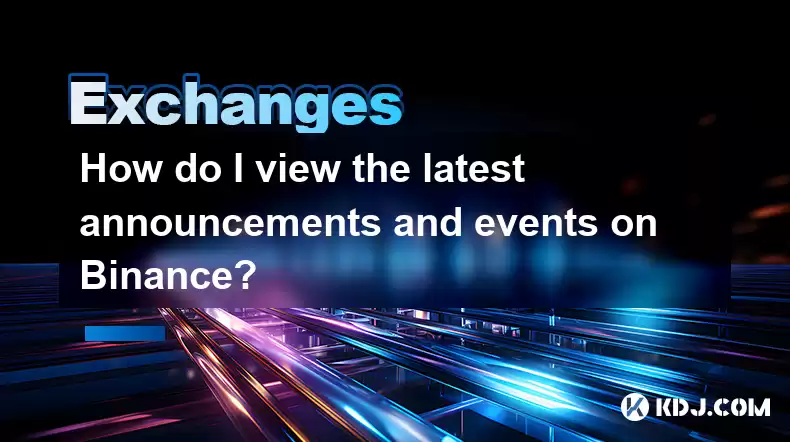
How do I view the latest announcements and events on Binance?
Mar 18,2025 at 10:18pm
Key Points:Binance utilizes multiple channels for disseminating announcements and events.The official Binance website is the primary source.Binance's ...
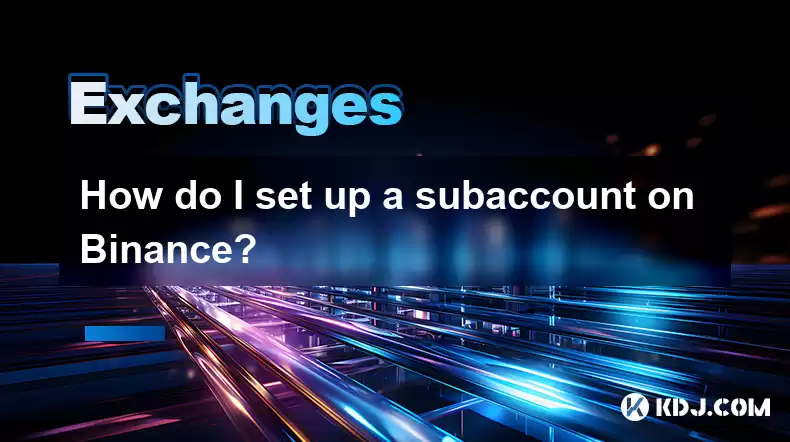
How do I set up a subaccount on Binance?
Mar 14,2025 at 01:50pm
Key Points:Binance does not offer traditional "subaccounts" in the sense of separate accounts with independent logins under a master account.Instead, ...

How do I view the list of supported currencies on Binance?
Mar 15,2025 at 05:35am
Key Points:Binance supports a vast and frequently updated list of cryptocurrencies. There's no single, static list.Finding supported currencies requir...
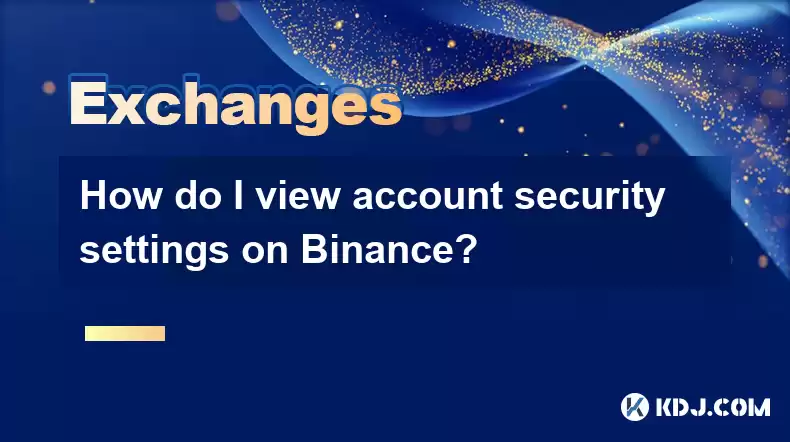
How do I view account security settings on Binance?
Mar 15,2025 at 08:40pm
Key Points:Binance's security settings are spread across multiple sections of your account. This article will guide you through each crucial area.Unde...
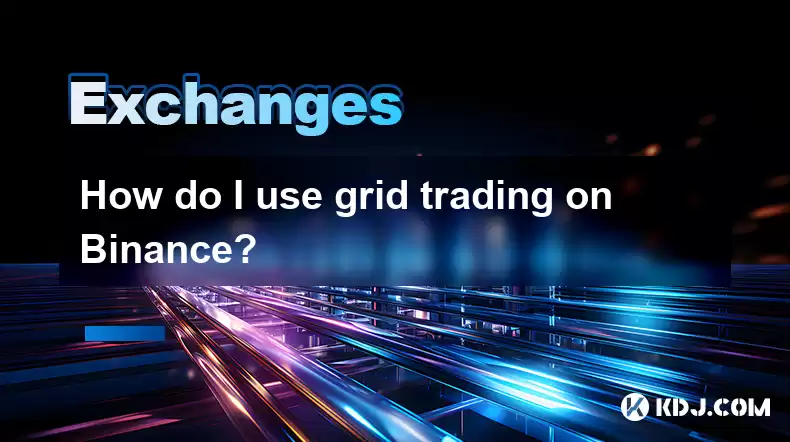
How do I use grid trading on Binance?
Mar 14,2025 at 04:25pm
Key Points:Grid trading on Binance involves automatically buying low and selling high within a defined price range.Binance offers a built-in grid trad...

How do I contact customer service on Binance to resolve issues?
Mar 16,2025 at 04:30am
Key Points:Binance's customer service is primarily self-service, relying heavily on its help center and FAQs.Direct contact methods are limited, with ...

How do I view the latest announcements and events on Binance?
Mar 18,2025 at 10:18pm
Key Points:Binance utilizes multiple channels for disseminating announcements and events.The official Binance website is the primary source.Binance's ...

How do I set up a subaccount on Binance?
Mar 14,2025 at 01:50pm
Key Points:Binance does not offer traditional "subaccounts" in the sense of separate accounts with independent logins under a master account.Instead, ...

How do I view the list of supported currencies on Binance?
Mar 15,2025 at 05:35am
Key Points:Binance supports a vast and frequently updated list of cryptocurrencies. There's no single, static list.Finding supported currencies requir...

How do I view account security settings on Binance?
Mar 15,2025 at 08:40pm
Key Points:Binance's security settings are spread across multiple sections of your account. This article will guide you through each crucial area.Unde...

How do I use grid trading on Binance?
Mar 14,2025 at 04:25pm
Key Points:Grid trading on Binance involves automatically buying low and selling high within a defined price range.Binance offers a built-in grid trad...
See all articles

























































































